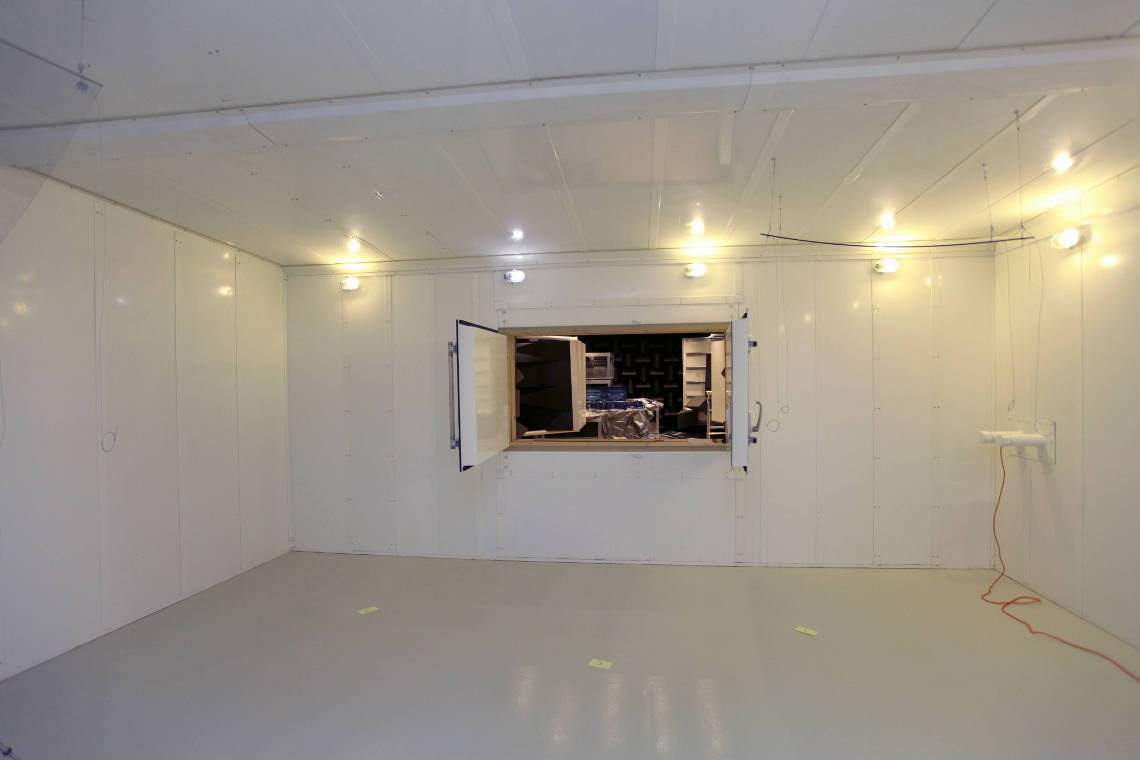Reverberation Room
Echo chambers, sometimes called reverberating chambers, is characterised by having extremely long reverberation, as opposed to an anechoic or echo-free chamber, which has close to no reverberation. IAC Acoustics A/S builds reverberant chambers which make it possible to measure acc. to ISO 354.

Reverberation room
A reverberation room, also referred to as a reverberating chamber or echo chamber, is the opposite of an anechoic chamber. The room's surfaces do not absorb sound but reflects it instead. Reverberant rooms are typically used to perform tests such as
- Sound transmission in building components such as walls, doors or windows
- Insertion attenuation in silencers
- Microphones’ response characteristics
- Materials’ sound absorption coefficients
- Noise reduction tests in which equipment is tested under strong noise impact
With a reverberating chamber, you get a flexible acoustic test environment with a sound field in which sound energy flows equally in all directions. A reverberating chamber must be isolated from all external noise sources – and the temperature, pressure and humidity must also be under control.
Our solutions have been tested, and we have more than 60 years of experience in the design and construction of reverberant rooms.
As a rule, IAC Acoustics A/S' reverberant rooms are built in the IAC Hardliner™ panel construction, and comes readily connected to existing ventilation via our ventilation attenuators, complete with certification and commissioning test, light installations and power outlets.
If you need to build a reverberating chamber, you should contact one of our experts. There are many parameters to be assessed and considered in the process, and we will guide you towards making the right choices. Among other things must be addressed:
- Test standard and methodology. How do you achieve results you can use
- Interior volume. The room should be large enough for you to measure acc. to ISO 354, and there must be room for staff and equipment
- The lowest frequency range of interest
- Internal background noise and noise reduction. Including the design of the ventilation system
- Vibration dampening/insulation
- Noise reduced ventilation systems
- Doors and accessibility
- Lighting and electrical systems
Our reverberation rooms can have different equipment fitted
- Independent air treatment/ventilation system
- Additional and/or larger door
- Air suspension or other types of vibration
- Radio frequency shielding
- Tuning plates, reflectors, diffusers
